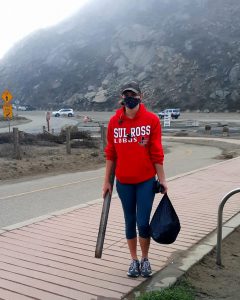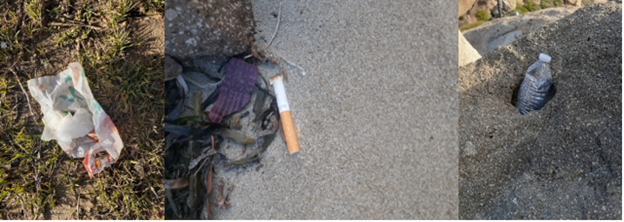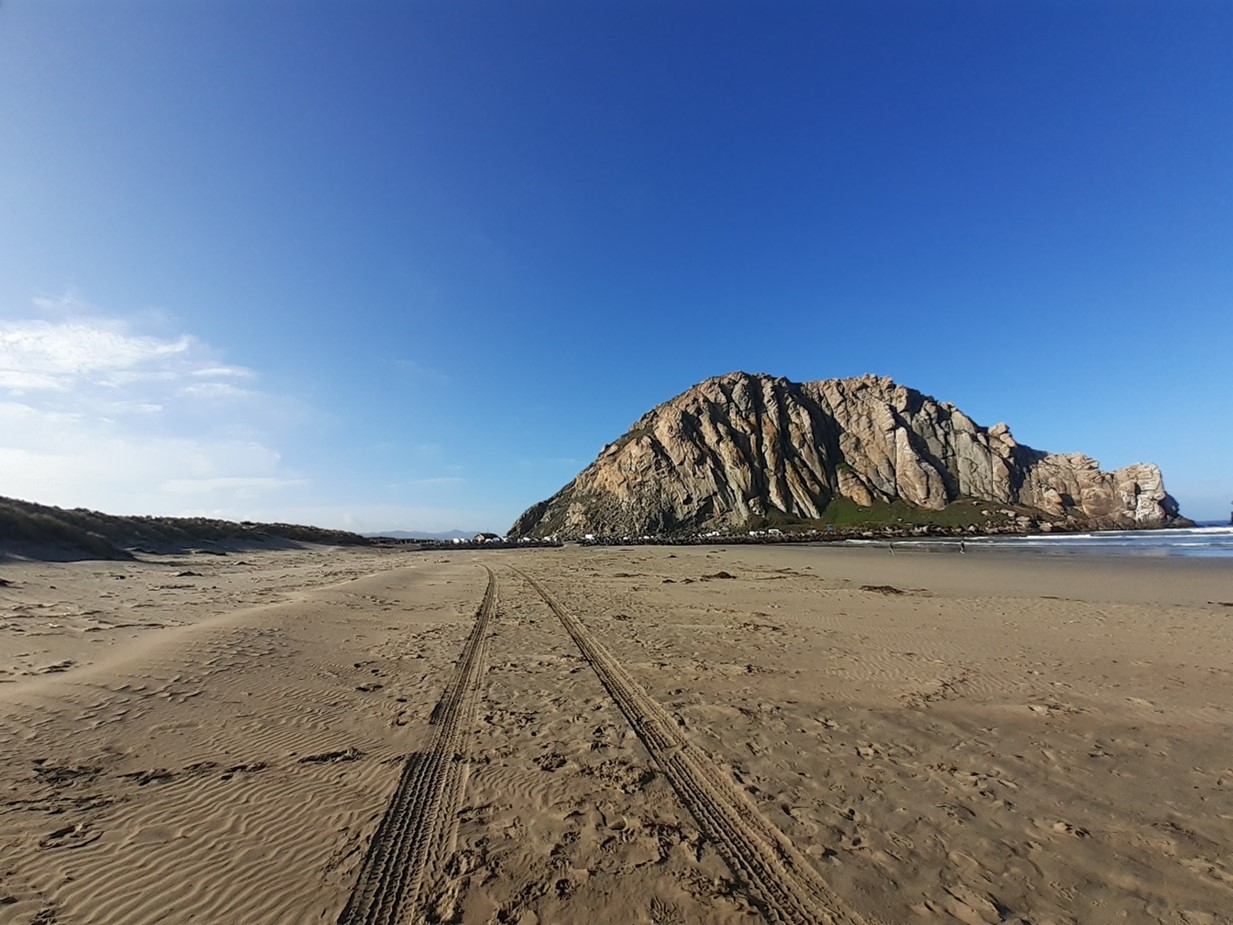Guest Post by Lily Newton

Keeping local beaches clean and beautiful
When I first moved to the Central Coast area a little over two years ago, one of the first things that struck me was how scenic and clean the local beaches were. Looking back now, the Texas Gulf Coast beaches that I had grown up visiting were a far cry from pristine, often cluttered with plastic waste and suffering from many other signs of damage from frequent use. Now that I call Los Osos and Morro Bay home, keeping this area as scenic and beautiful as it was when I first arrived has become an important personal project of mine. Currently, my favorite places to keep true to my goal are the popular beaches surrounding Morro Rock. Due to the high volume of local and tourist traffic, it is alarming how quickly litter and other human detritus accumulates, despite the efforts of many, including myself, to keep the sand and water clean.

At first my weekly beach visits were limited to winter and summer breaks, when I wasn’t attending university out of state. Since graduating, I can now keep working on the beach all year-round, which has led to some interesting endeavors and observations.
Typical trash items
For the first few months I spent cleaning around Morro Rock, I didn’t notice any discernable trends in the litter on the beach; each week seeming to be a new random amount and assortment of items. For a couple of weeks, the overall haul could consist of cigarette butts, alcohol containers, fishing line, discarded doggy bags, some food-related detritus, and not too much else. However, the week after, the sand and rocks would be covered in fast-food wrappings, beer cans, sand toys, and even party supplies. With this observation and a bit of guess work, I realized that what was left on the beach had at least some relation to the number of people visiting the beach. Predictably, the weeks that yielded the highest amounts and diversity in the garbage left on the beach coincided with a highly touristed weekend, particularly during or after holidays.

Strange trash items and PPE on the beach
Normally, my weekly litter hunts are a simple matter of shuffling through the sand for a couple hours, picking up whatever bright and shiny bits I can spot, maybe combing the parking lot and fire pits if I’m feeling ambitious. A couple of unfortunately common, if somewhat amusing, additions to my preferred circuit include chasing around stray napkins through the dunes on windy days and dangling headfirst into rock-crevices to fish out deliberately hidden empty beer cans and bottles. A big change since I first started is the sheer number of masks that I find lost or discarded at the beach. Disposable masks have become a very common item to find amongst the other litter. They can easily blow into the water, and their elastic ear straps can entangle and harm wildlife. So, please make sure to break or cut the straps before you throw your mask out. Then, make sure it’s safely tucked into a garbage can or dumpster, not blowing free or hiding in the sand.

Why I pick up trash every week
While to some it might seem excessive to visit the beach once a week just to pick up litter, every single time I walk away with a large trash bag at least a quarter full and 5 pounds heavy and that’s just within a one-mile stretch. During the worst weeks, I sometimes leave the same strand of beach dragging out over 15 pounds of garbage, consisting of masks, glass, cans, soiled sand and waterlogged clothes, fast food containers, hygiene products, broken toys, fishing line and gear, and just about anything else you could imagine.
What you can do to help our beaches
Despite my own efforts and the daily contributions of many others, there is still a massive buildup of litter. So please, do your part and pack out what you bring with you. Bring a small bag when you come to the beach, so you easily pack out any trash you generate. If there are no available trash receptacles, having a bag also makes it much easier to either carry or drive your trash out someplace where it can be properly disposed of. It is not just the aesthetic of the beach that’s affected by litter, but also the wildlife, water quality, and the environment as a whole. Just five minutes of your time can keep the beach that much cleaner, so please carry out what you bring and maybe even spare a couple of minutes pick up anything else you see along your way.

Guest Post Author, Lily Newton
Lily Newton was born and raised in Austin Texas where she first learned her love for anything outdoors. She began her education as a homeschool student, using the local Hill Country to its fullest, spending much of her childhood hiking, swimming, and learning about the wildlife and environment. Later Lily enrolled as a dual credit at Austin Community College before eventually transferring to Sul Ross State University in West Texas. There she spent much of her time studying in the field, mapping wide swaths of desert, and monitoring the Rio Grande from canoe, before finally graduating with a bachelor’s degree in Geology, Fall 2020. Now she lives on the West Coast with her family, spending time hiking through Montana de Oro State Park, visiting the local beaches, and slowly beginning her career in geosciences.
Help us protect and restore the Morro Bay estuary
- Donate to the Estuary Program today and support our work in the field, the lab, and beyond.
The Estuary Program is a 501(c)3 nonprofit. We depend on funding from grants and generous donors to continue our work. - Support us by purchasing estuary-themed gear from ESTERO. This locally owned and operated company donates 20% of proceeds from its Estuary clothing line and 100% of Estuary decal proceeds to the Estuary Program. Thank you, ESTERO!
- Purchase items from the the Estuary Program’s store on Zazzle. Zazzle prints and ships your items, and the Estuary Program receives 10% of the proceeds. Choose from mugs, hats, t-shirts, and even fanny packs (they’re back!) with our fun Estuary Octopus design, our classic Estuary Program logo, or our Mutts for the Bay logo.